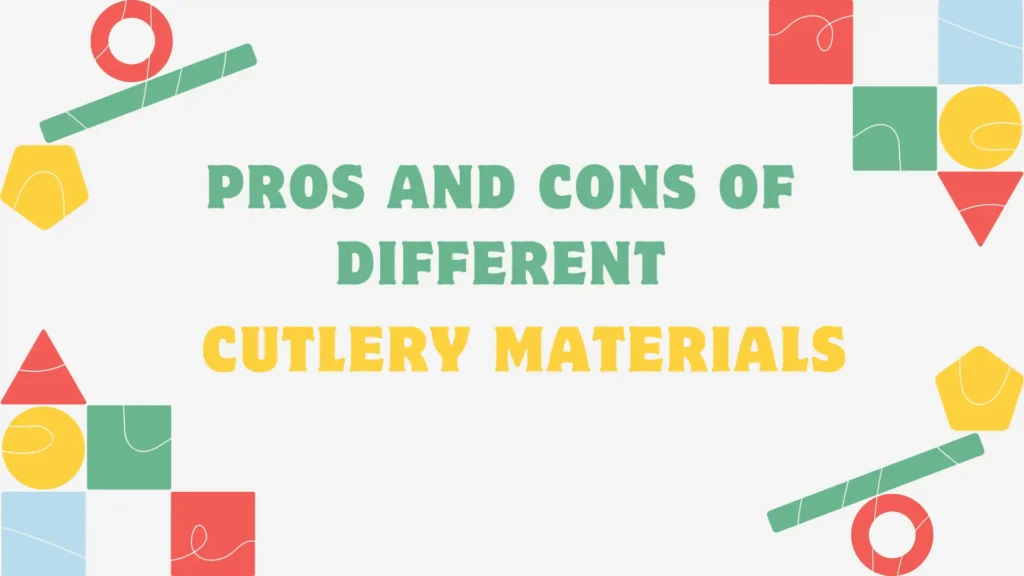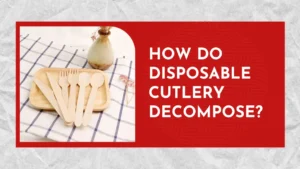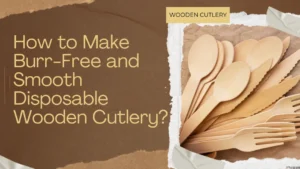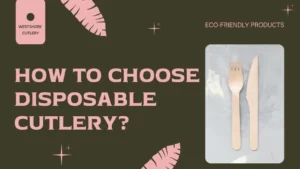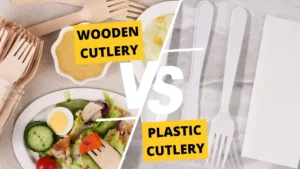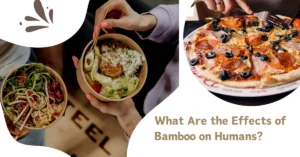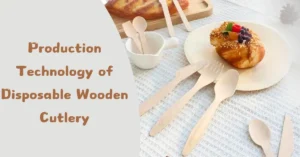When it comes to choosing cutlery materials, the wide range of options available can make it difficult to decide which one is the best fit for your needs. Each cutlery material has its own unique combination of pros and cons, making it essential to weigh your options carefully.
Each Cutlery material offers distinct benefits. Understanding the advantages and disadvantages of each cutlery material can guide you in making the right choice based on your preferences and lifestyle.
In this article, we will explore the pros and cons of different cutlery materials, helping you make an informed decision.
What cutlery materials are there?
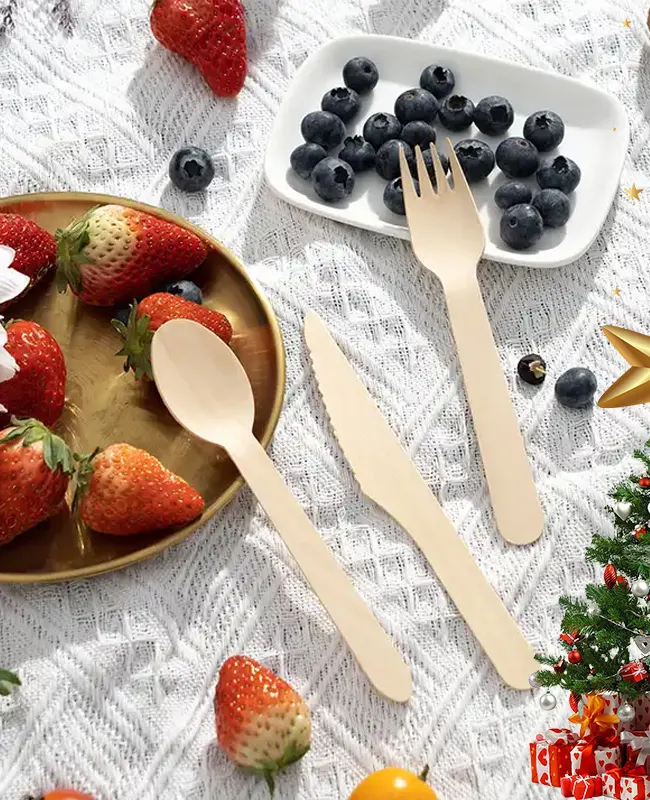
Wooden Cutlery
Wooden cutlery, made from renewable resources like birch or bamboo, offers an eco-friendly alternative to traditional plastic utensils. Its biodegradable nature makes it a popular choice for environmentally conscious consumers and businesses looking to reduce their carbon footprint. Wooden cutlery is often used in catering, takeaways, and outdoor events, where disposability and minimal environmental impact are key considerations.
Plastic Cutlery
Plastic cutlery made from various types of plastics, such as polystyrene and polypropylene, it offers durability and the convenience of single-use without the need for cleaning.
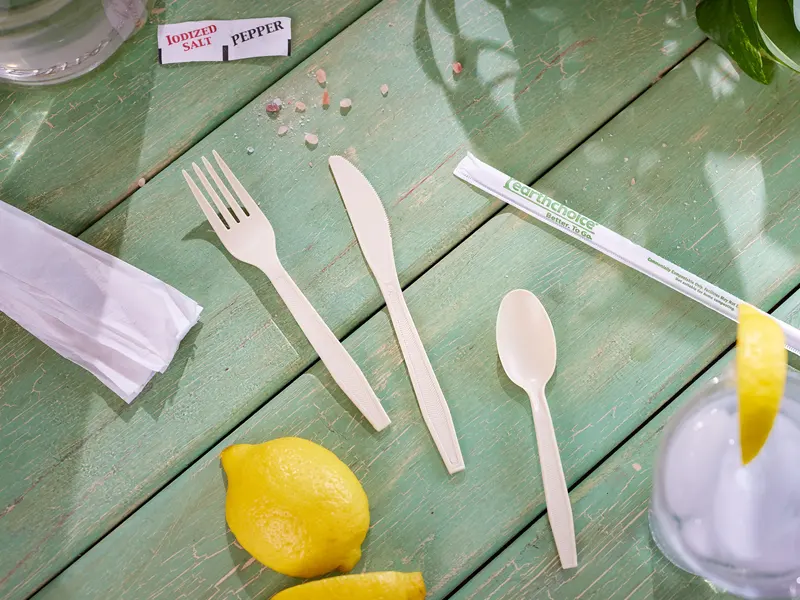
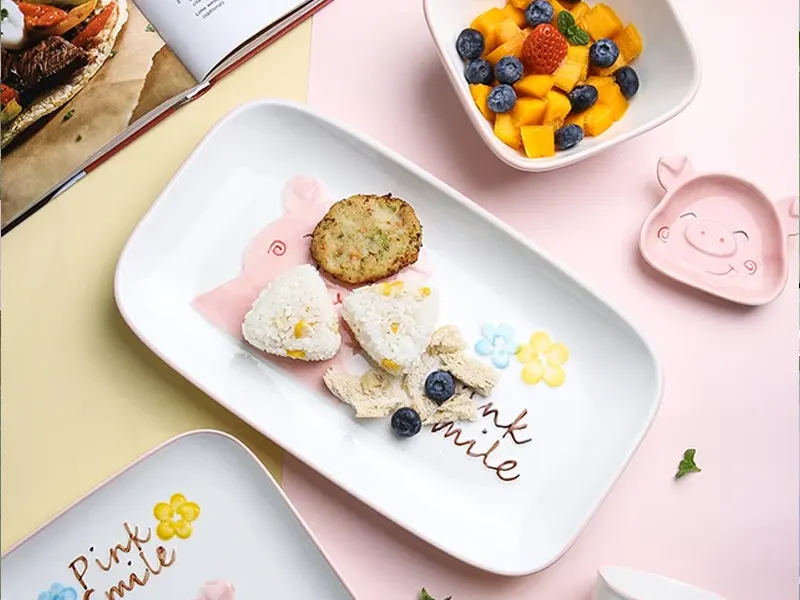
Ceramic Cutlery
Ceramic cutlery is made from hardened clay and offers a high-end dining experience. It’s resistant to rust and corrosion, maintaining a sharp edge longer than many metal knives.
Bamboo Cutlery
Bamboo cutlery is celebrated for its sustainability, strength, and biodegradability. As one of the fastest-growing plants on Earth, bamboo provides a renewable resource that’s both lightweight and sturdy, making it an excellent material for eco-friendly cutlery.
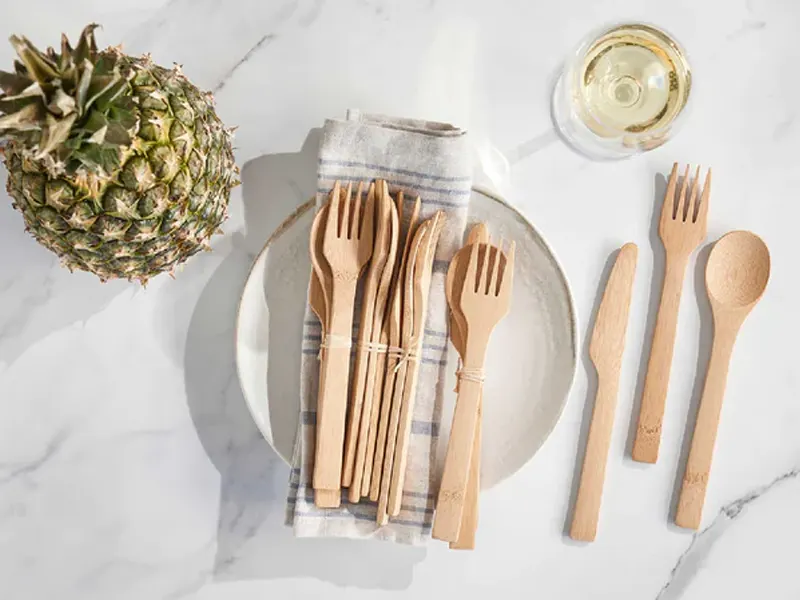
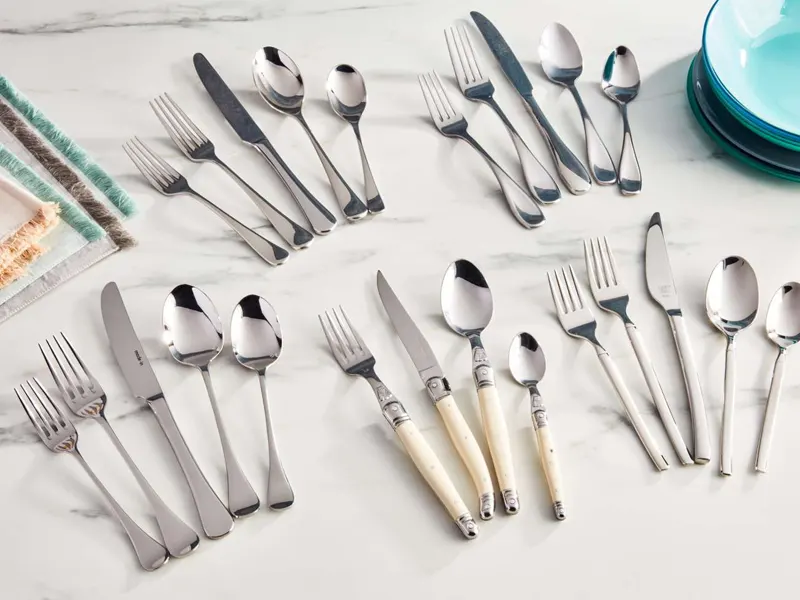
Stainless Steel Cutlery
Stainless steel cutlery is made from an alloy of iron, chromium, and occasionally nickel, it’s resistant to rust and tarnishing, ensuring that it can last for years with proper care.
Glass Cutlery
Glass cutlery is a unique choice that combines elegance and functionality. Typically made from strengthened glass like borosilicate, it’s designed to withstand the rigors of dining without compromising on style.
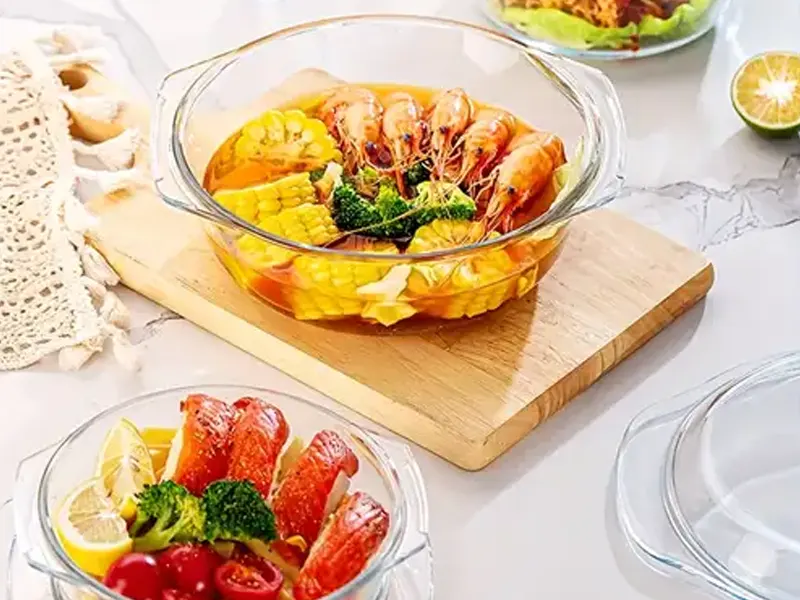
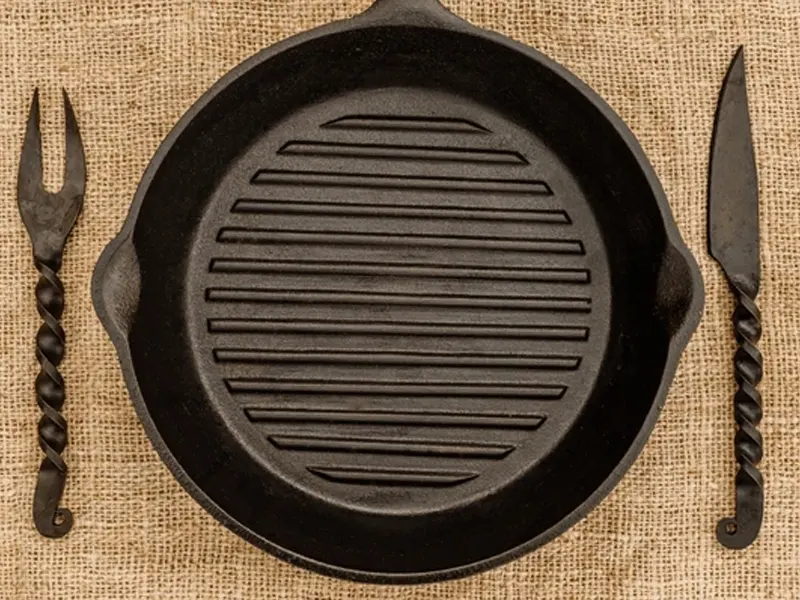
Iron Cutlery
Iron cutlery is made from cast iron or wrought iron, this type of cutlery is valued for its strength and rustic charm. Iron cutlery requires some maintenance to prevent rust and ensure its longevity.
Aluminum Cutlery
Aluminum cutlery is prized for its lightweight nature and resistance to corrosion.Aluminum’s excellent thermal conductivity ensures that it doesn’t become too hot or too cold, offering a comfortable dining experience.
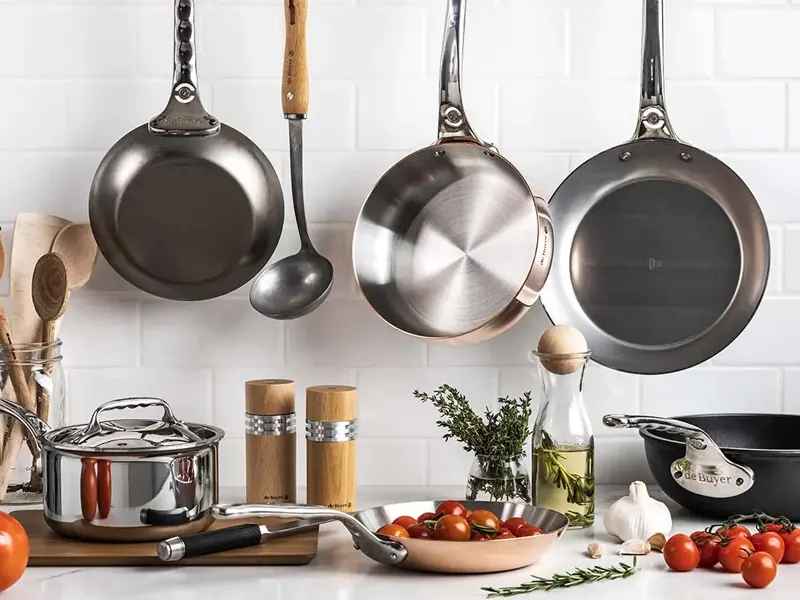
Pros and cons of cutlery materials
Understanding the advantages and disadvantages of various cutlery materials will help you make an informed decision. Each material caters to different priorities. Here are the pros and cons of different cutlery materials
Pros and Cons of Wooden Cutlery
Pros:
- Eco-friendly: Wooden cutlery is biodegradable and compostable, reducing environmental footprint compared to plastic.
- Aesthetic Appeal: Offers a unique, natural look that can enhance the presentation of meals.
- Chemical-Free: Typically free from harmful chemicals found in some plastics.
Cons:
- Durability: Not as durable as metal or plastic, can break or splinter with use.
- Maintenance: Requires hand washing and cannot be used in microwaves or dishwashers.
- Inconsistency: Variations in wood grain and color can lead to inconsistency in sets.
Pros and Cons of Ceramic Cutlery
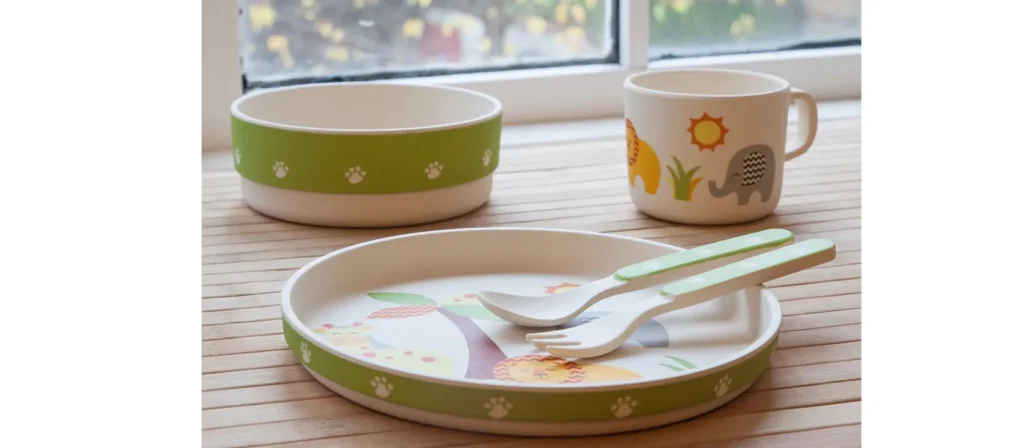
Pros:
- Aesthetics: Ceramic cutlery offers a sophisticated and elegant look, with a variety of designs and colors.
- Heat Resistance: Good for serving hot foods; retains temperature well.
- Non-reactive: Does not impart flavors to food or react with acidic foods.
Cons:
- Fragility: Prone to chipping and breaking if dropped or mishandled.
- Weight: Generally heavier than other materials, which can be a drawback for some users.
- Cost: Higher-quality ceramic cutlery can be more expensive than other materials.
Pros and Cons of Bamboo Cutlery
Pros:
- Sustainability: Bamboo is a fast-growing, renewable resource that is also biodegradable.
- Lightweight and Strong: Easier to handle and quite durable for a natural material.
- Antimicrobial: Natural resistance to bacteria and other microbes.
Cons:
- Limited Durability Compared to Metal: May not last as long as stainless steel.
- Care and Maintenance: Requires proper drying to prevent mold, not dishwasher safe.
- Variability: Natural material can mean variations in strength, color, and grain.
Pros and Cons of Stainless Steel Cutlery
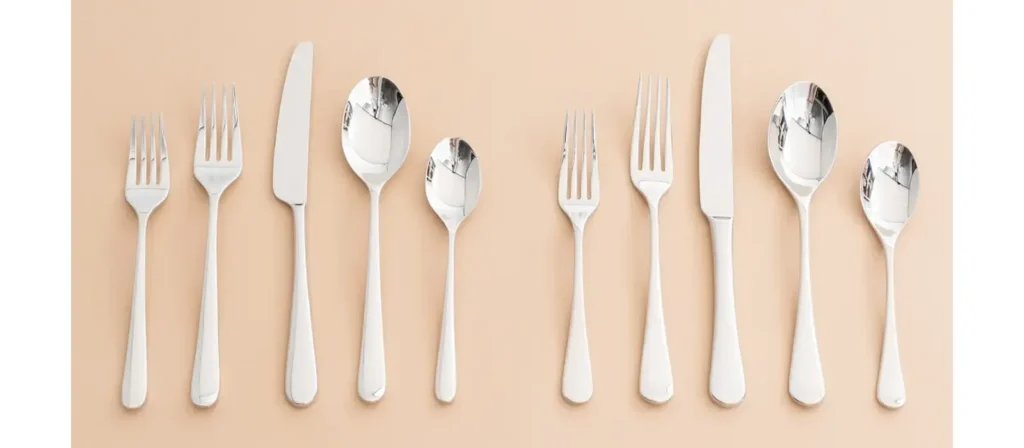
Pros:
- Durability: Extremely durable, resistant to bending, chipping, and rust.
- Maintenance: Easy to clean, dishwasher safe, and requires little to no special care.
- Hygienic: Non-porous surface prevents bacteria buildup and is easy to sanitize.
Cons:
- Environmental Impact: Production is energy-intensive and contributes to carbon emissions.
- Cold Conductivity: Can become very cold or hot, depending on the food temperature.
- Aesthetic Variety: Lacks the warm, natural appeal of wood or bamboo.
Pros and Cons of Plastic Cutlery
Pros:
- Affordability: One of the cheapest options available, suitable for large gatherings.
- Convenience: Lightweight and disposable, ideal for picnics or takeout meals.
- Variety: Comes in various colors and styles to match any decor or theme.
Cons:
- Environmental Impact: Contributes significantly to plastic pollution and is not biodegradable.
- Health Concerns: Some plastics may leach chemicals into food, especially when heated.
- Quality: Often lacks the strength and durability of metal cutlery, can break easily.
Pros and Cons of Glass Cutlery

Pros:
- Aesthetics: Offers a clean, elegant look that can elevate any dining experience.
- Non-reactive: Does not absorb flavors or odors, maintaining the purity of food tastes.
- Eco-friendly: Made from natural materials and fully recyclable without quality loss.
Cons:
- Fragility: Prone to breaking or chipping, requiring careful handling and storage.
- Weight: Generally heavier than plastic or aluminum, which may be inconvenient for some users.
- Cost: Higher-quality glass cutlery can be more expensive than other materials.
Pros and Cons of Iron Cutlery
Pros:
- Durability: Iron is incredibly durable, capable of withstanding years of use without significant wear.
- Heat Retention: Excellent for serving hot meals, as it retains heat well, keeping food warmer for longer.
- Aesthetic Appeal: Offers a classic, elegant look that can elevate dining settings and complement traditional décor.
Cons:
- Prone to Rust: Without proper care, iron cutlery can rust, requiring regular maintenance to prevent oxidation.
- Weight: Heavier than other materials, which might be cumbersome for some users during extended dining sessions.
- Care Requirements: Typically not dishwasher safe; requires hand washing and thorough drying to maintain its appearance and longevity.
Pros and Cons of Aluminum Cutlery
Pros:
- Lightweight: Easy to handle, making it a good choice for children and outdoor dining experiences.
- Corrosion Resistance: Naturally resistant to rust and corrosion, ensuring a longer lifespan with less maintenance.
- Affordability: Generally more affordable than iron, offering a cost-effective option without sacrificing quality.
Cons:
- Durability Issues: While resistant to corrosion, aluminum can dent and scratch more easily than iron.
- Heat Conductivity: Can become too hot or too cold quickly, potentially making it uncomfortable to use with certain foods.
- Health Concerns: Some studies suggest caution when using aluminum with highly acidic or salty foods due to potential metal leaching.
Choose the right cutlery material based on your needs
When it comes to cutlery, one size certainly does not fit all. The material you choose impacts not only the look and feel of your table setting but also the longevity and care of your cutlery. Here’s a deeper dive into how to select the best material based on various needs:
For the Eco-Conscious: Bamboo and Biodegradable Materials
If sustainability is your priority, consider cutlery made from renewable resources like bamboo or other biodegradable materials. These options are not only gentle on the planet but also add a unique, natural aesthetic to your table. Bamboo, in particular, is known for its durability and antimicrobial properties, making it a practical and eco-friendly choice.
For the Traditionalist: Stainless Steel and Silver
For those who value tradition and durability, stainless steel and silver cutlery are time-honored choices. Stainless steel is renowned for its resistance to rust and corrosion, offering a blend of longevity and ease of maintenance. Silver, while requiring a bit more care to maintain its luster, brings elegance and refinement to any dining occasion.
For the Modern Aesthetic: Glass and Ceramic
Seeking something that stands out? Glass and ceramic cutlery offer a modern twist to traditional tableware. These materials can complement a contemporary dining aesthetic with their unique textures and designs. While they may require careful handling, their distinct appearance can elevate the dining experience.
For Casual and Outdoor Dining: Plastic and Aluminum
For picnics, barbecues, and casual gatherings, plastic and aluminum cutlery provide practicality and convenience. While plastic options are available in disposable forms, choosing reusable or biodegradable plastics can help reduce environmental impact. Aluminum, being lightweight and rust-resistant, is ideal for outdoor activities, offering durability without the weight.
For Unique Tastes: Specialty Materials
Adventurous types might explore cutlery made from specialty materials such as horn, bone, or even gold-plated options. These materials cater to unique tastes and can serve as conversation starters, though they may require specific care routines to maintain their beauty and functionality.
Conclusion
The journey to selecting the perfect cutlery material is a personal one, reflecting your lifestyle, values, and aesthetic preferences. By understanding the characteristics and benefits of each material, you can make an informed choice that enhances your dining experience and complements your table setting.

